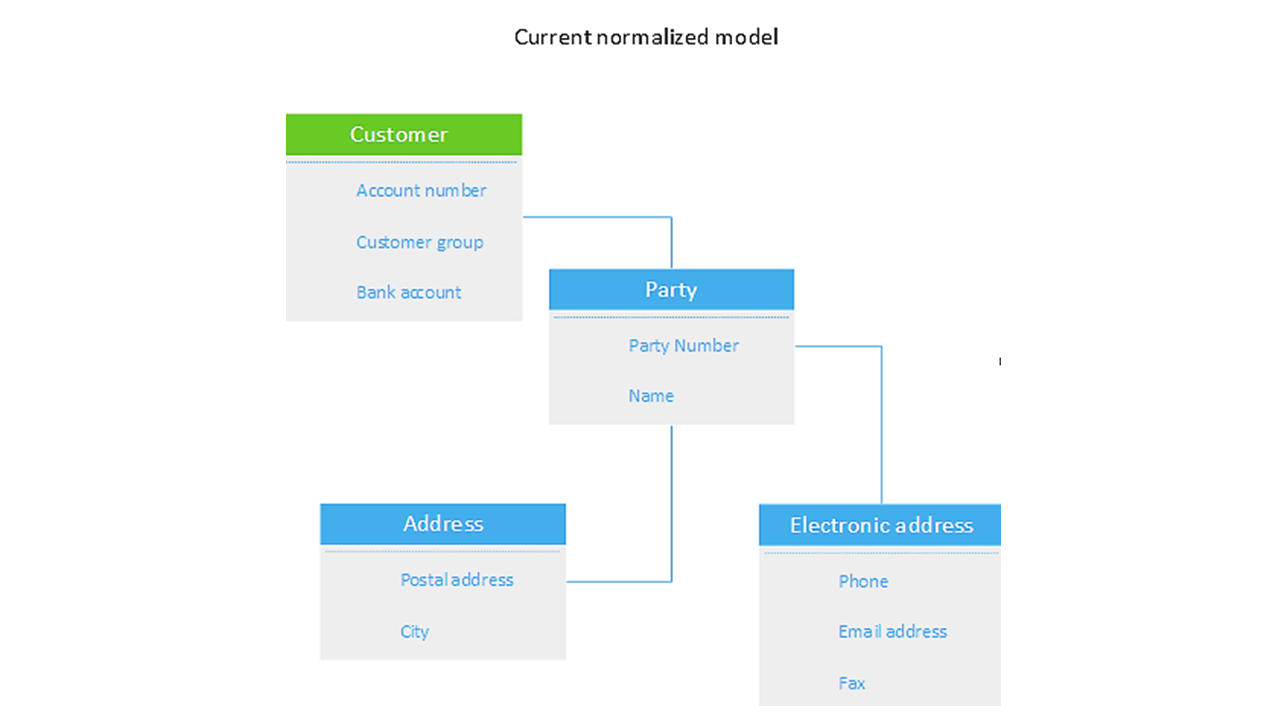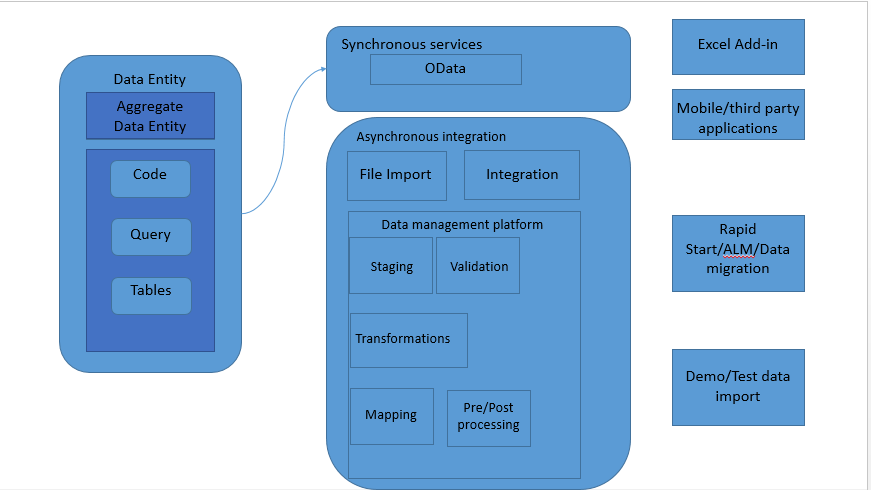What are Data Entities? Understanding Their Role in Data Management
Table of Content:
Introduction Data entities?
In the earlier version of Dynamics 365 for Finance and Operations, there are multiple options such as DIXF, Excel Add-ins, and AIF for data management. Data entities are introduced as a part of data management to be used as a layer of abstraction to easily understand by using business concepts.
The concept of data entities combines those different concepts into one. You can reuse Data entities for an Excel Add-ins, Integration, or import/export. The following table shows core scenarios of Data management:
|
Data Migration |
Migrate reference, master, and document data from legacy or external systems. |
|
Setup and copy configuration |
Copy configuration between company/environments. Configure processes or modules using the Lifecycle Services (LCS) environment. |
|
Integration |
Real-time service based integration. Asynchronous integration. |
What is Data entities?
In Dynamics 365 Finance & Operations (D365FO), a Data Entity is an abstraction that encapsulates a set of related data sources, making it easier to interact with data from multiple tables or views within the system. It provides a unified way to access, manipulate, import, and export data across different modules of D365FO.
Key Points about Data Entities:
-
Abstraction Layer: Data entities provide a layer of abstraction between the physical database tables and the application logic. This allows developers and users to work with a simplified and consistent interface without needing to directly interact with complex table structures.
-
Data Access: Data entities are used to expose data to external systems, enabling integration and data exchange. They can be consumed by OData services, Excel add-ins, and other integration tools.
-
CRUD Operations: Data entities support Create, Read, Update, and Delete (CRUD) operations, allowing for data manipulation within the system. These operations can be performed through various channels such as web services, Excel, or custom applications.
-
Data Management: Data entities are used extensively in the Data Management Framework (DMF) for data import/export scenarios. This makes them essential for data migration, system integration, and batch data processing.
-
Security: Data entities are integrated with the security model of D365FO, meaning that access to data through entities is controlled by the security roles and privileges assigned to users.
-
Customization and Extension: Developers can create custom data entities or extend existing ones to meet specific business requirements, enabling more tailored data interactions.
Entity Example
A user needs to access customer-related data, but this data is spread across multiple normalized tables like DirParty, CustTable, LogisticPostalAddress, and LogisticElectronicAddress. This makes data access and management complex. By designing a customer entity that consolidates these tables into a single, denormalized view, the process of reading and writing data becomes much simpler. This approach also abstracts the internal workings between the tables, streamlining operations.

Use Cases for Data Entities:
- Data Import/Export: Data entities are commonly used to move data in and out of D365FO, either manually through Excel or automatically through batch jobs and integrations.
- Integration with External Systems: Data entities serve as the primary method for integrating D365FO with other applications, ensuring that data flows smoothly between systems.
- Analytics and Reporting: Data entities can be used to expose data to Power BI or other reporting tools, facilitating advanced analytics and business intelligence.
Common Terminology in Data Management
|
Data project |
A project that contains configured data entities, which include mapping and default processing options. |
|
Data job |
A job that contains an execution instance of the data project, uploaded files, schedule (recurrence), and processing options. |
|
Job history |
Histories of source to staging and staging to target. |
|
Data package |
A single compressed file that contains a data project manifest and/or data files. This is generated from a data job and used for import or export of multiple files with the manifest. |
Data management uses data entities under the hood for an abstract layer for business logic implementation. Data is inserted in staging tables using SSIS, which is then validated and transformed to map to the target entity.

- Question 1: What is the purpose of a data entity in Dynamics 365 Finance & Operations (D365FO)?
- Question 2: How does a data entity help in accessing customer-related data that is spread across multiple tables?
- Question 3: What are some of the capabilities of data entities in D365FO?
- Question 4: Why is a denormalized view beneficial when working with data entities?
